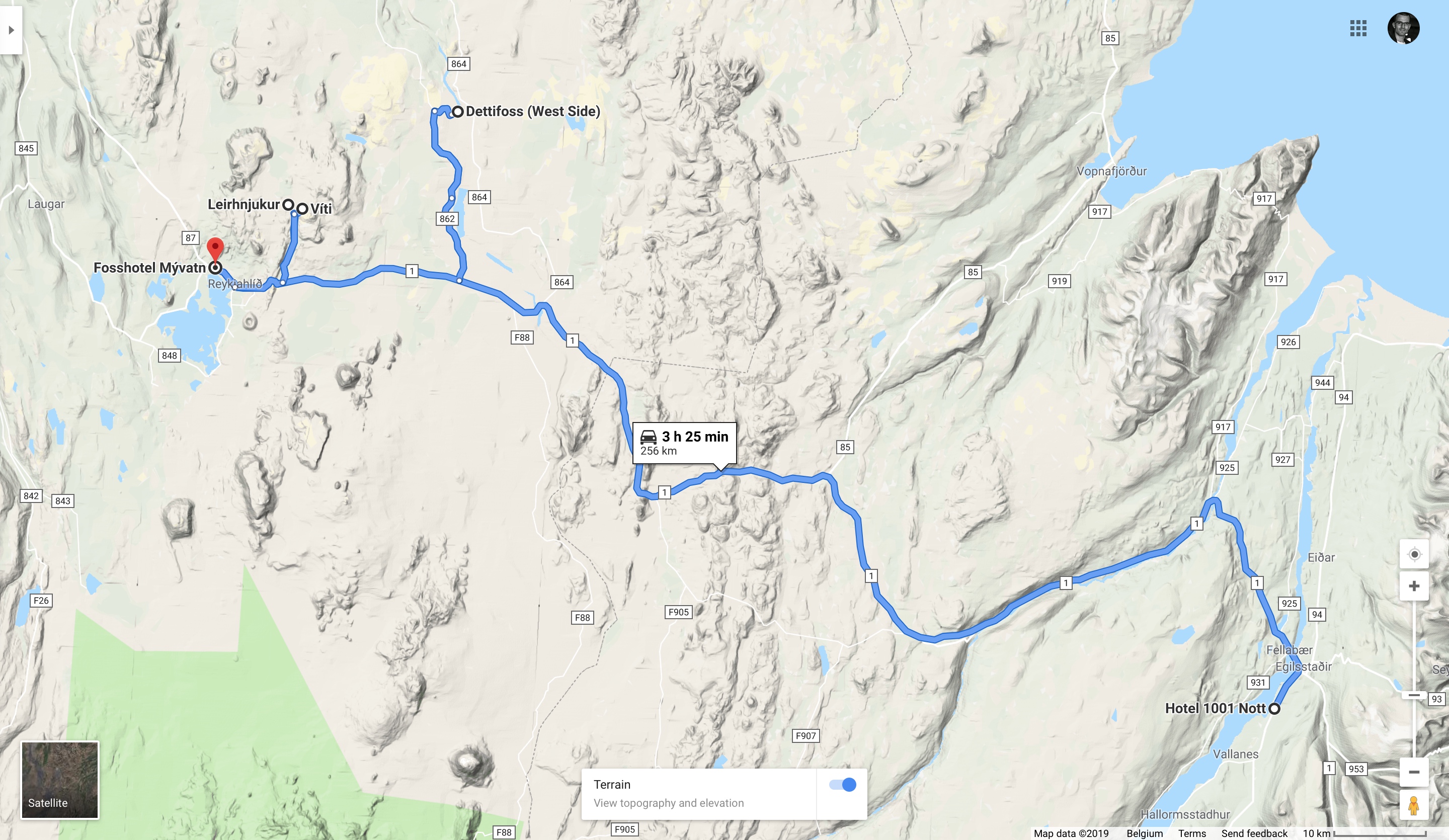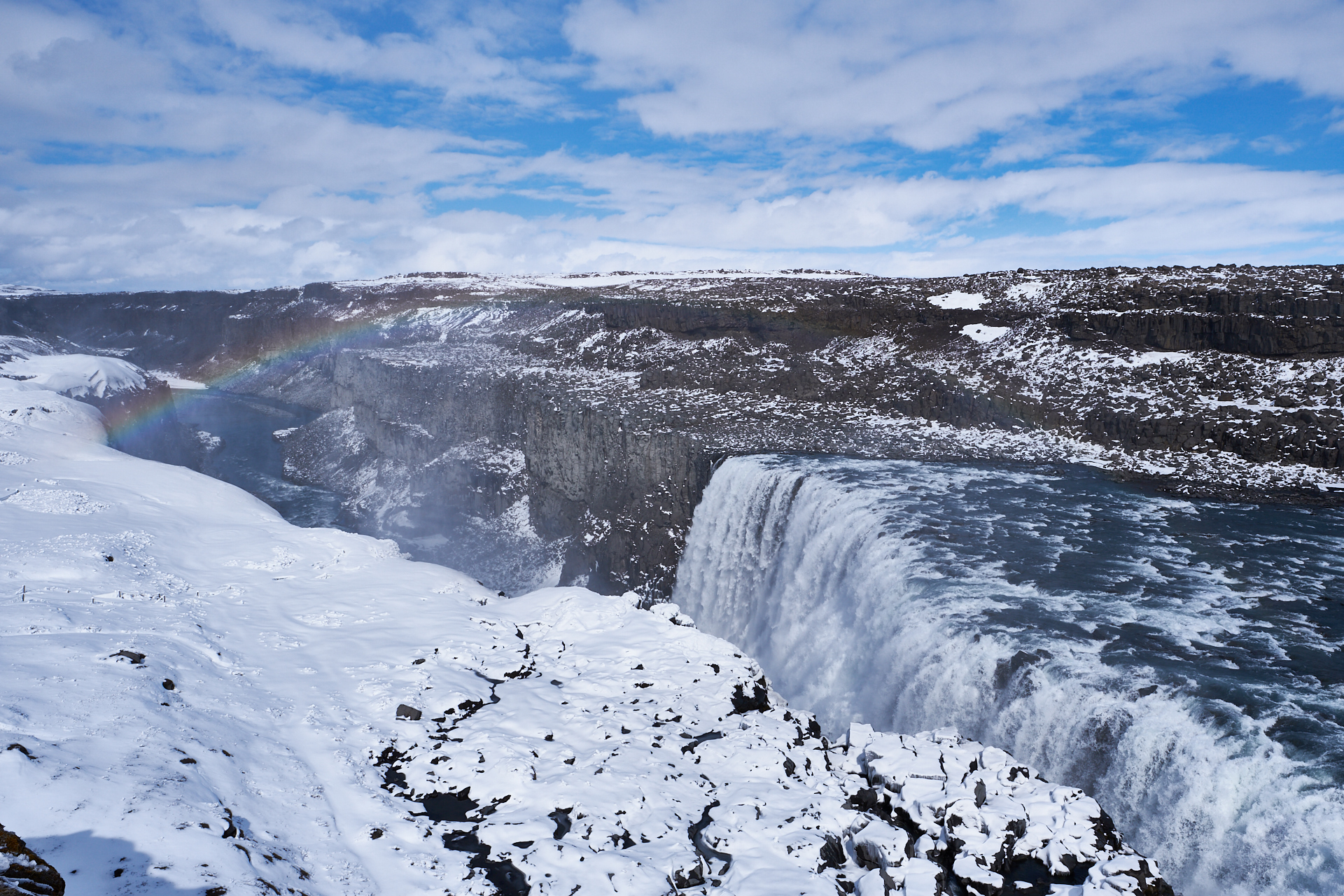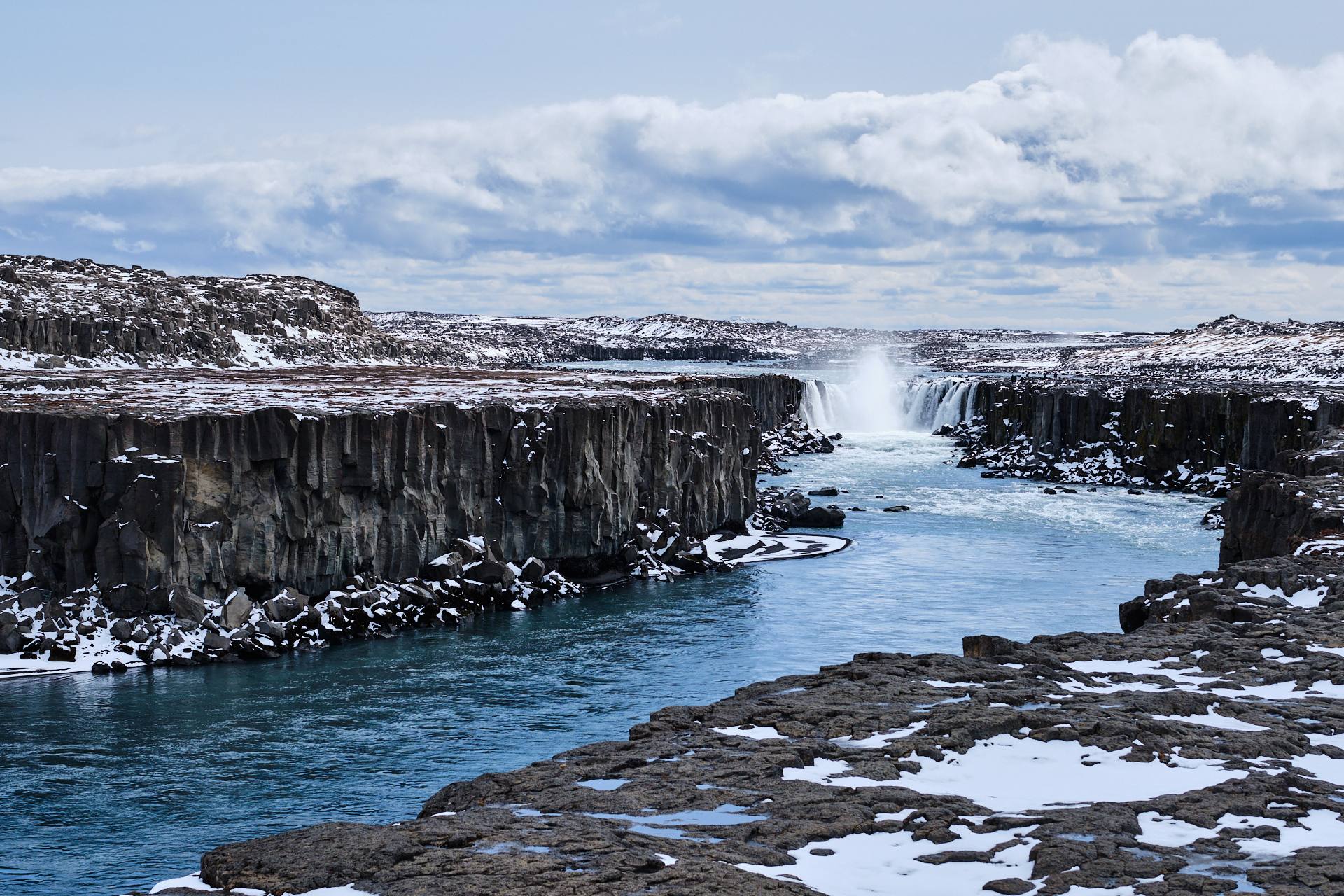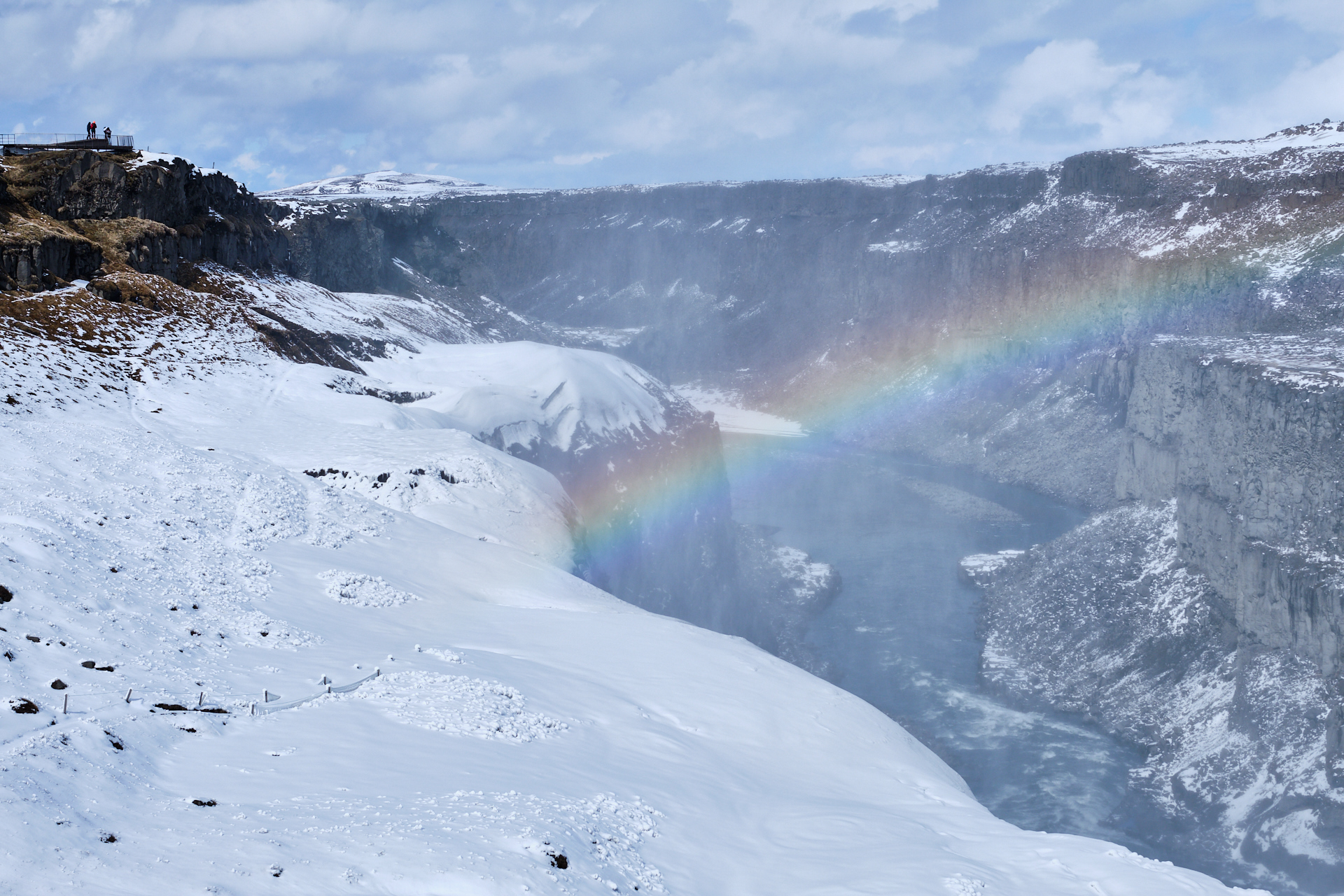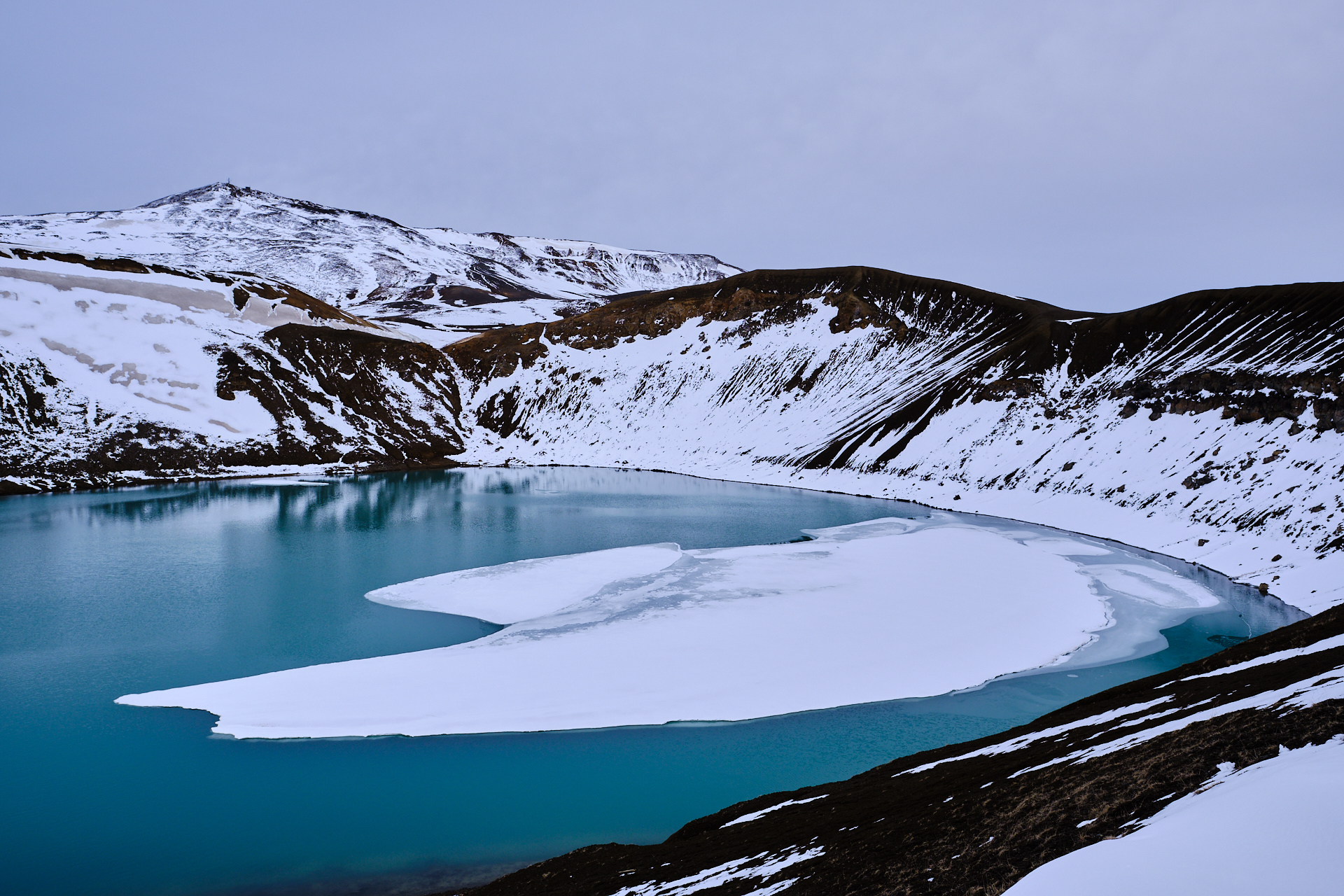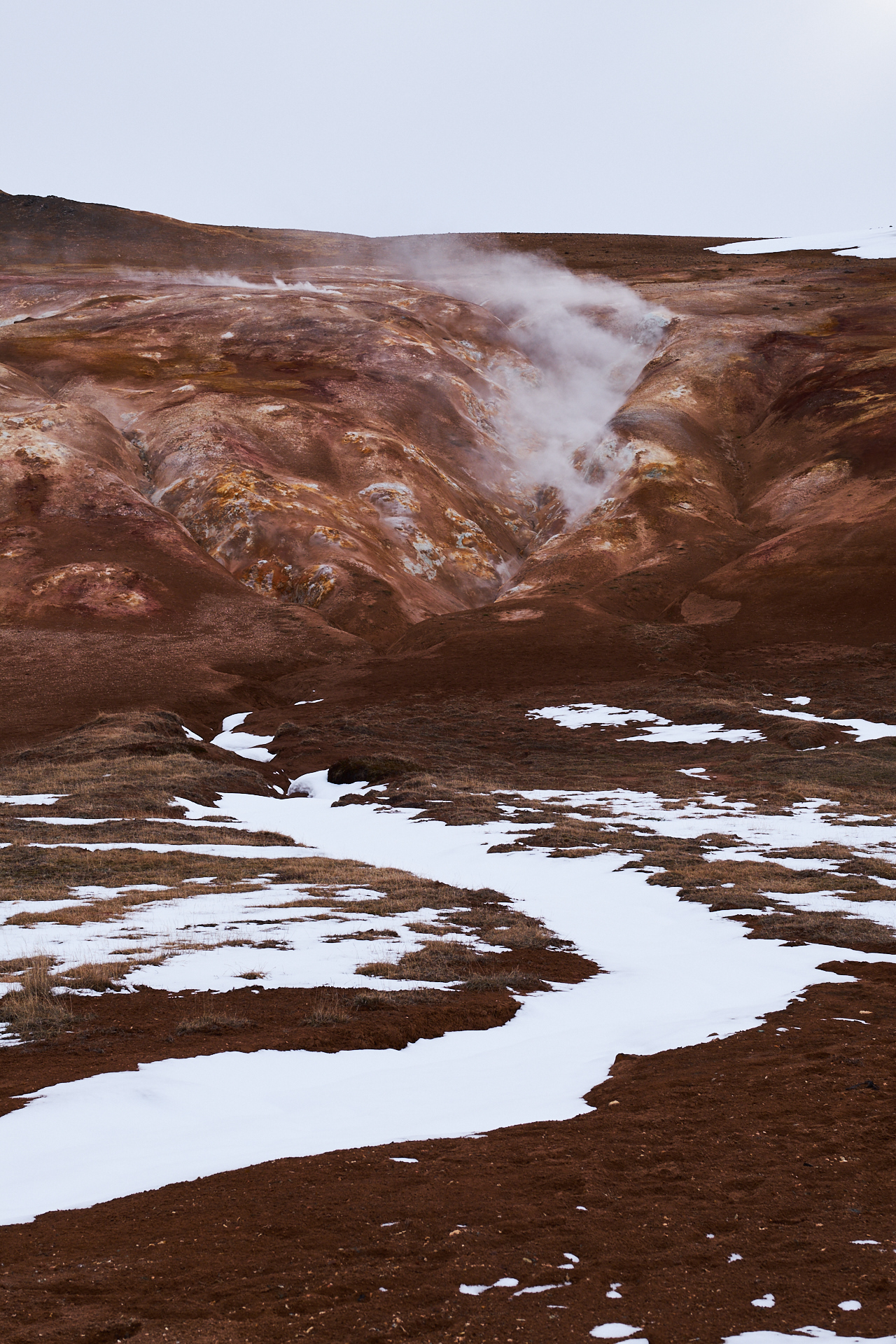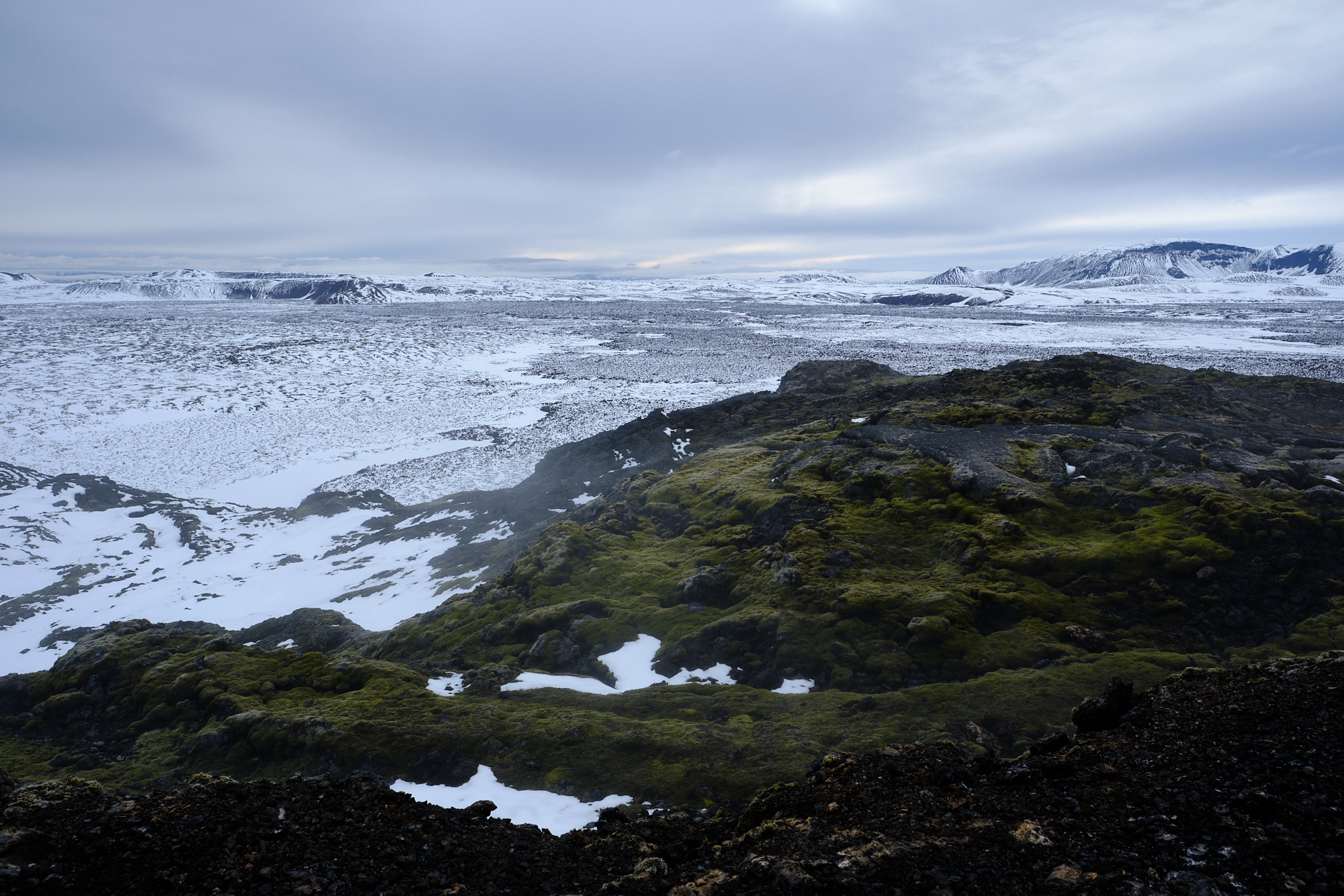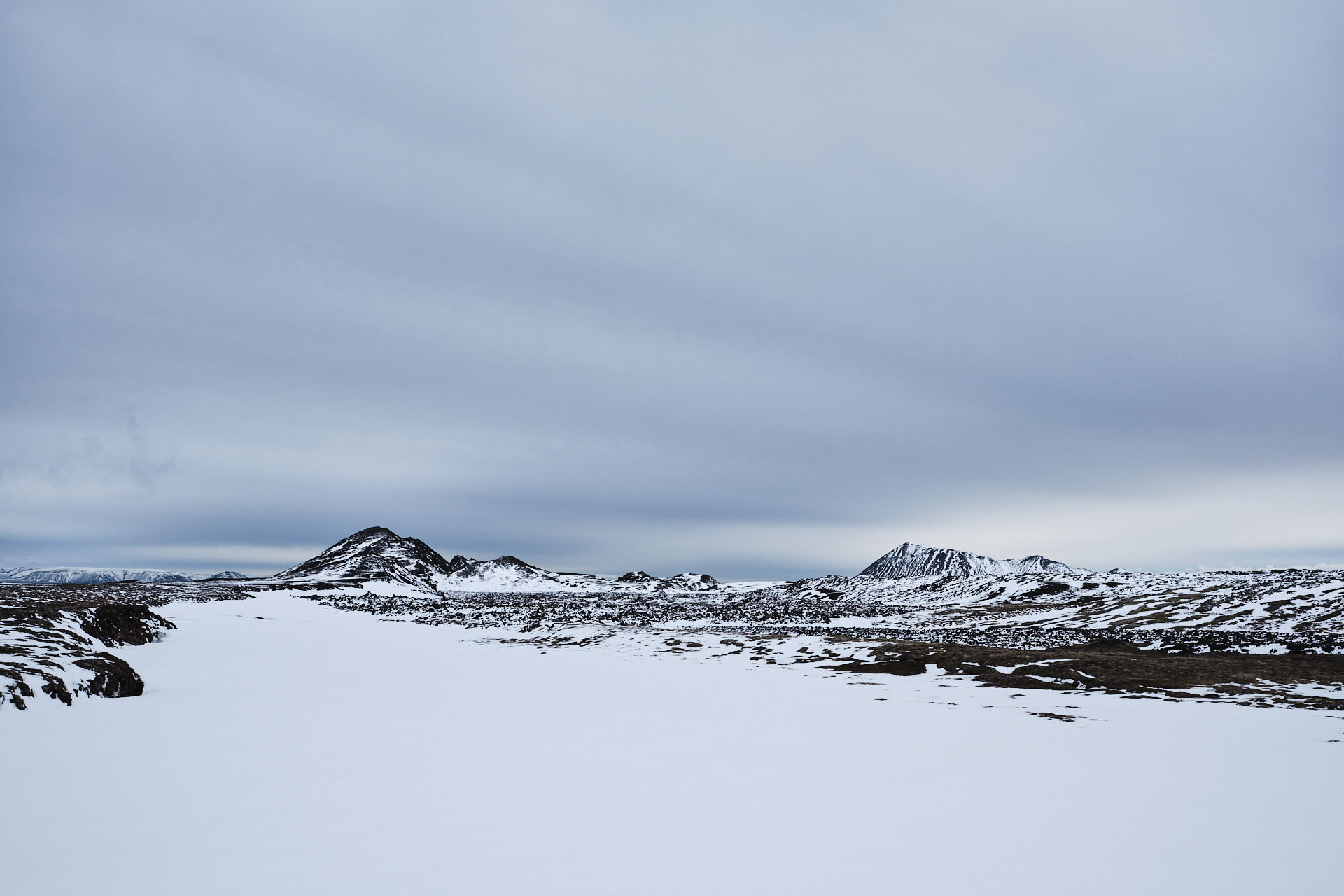With a very tiring (but awesome) day behind our backs, we were happy to take the morning easy, and enjoy the breakfast in our hotel for a bit longer than usual. Since we already visited the puffins the previous evening, we had quite some extra time on our hands.
We left around 10, first driving back to Egilsstaðir, then turning left onto the ring road, heading North. The weather was sunny, but still very cold, and the road condition reports indicated occasional patches of melting snow for later. It took quite some climbing to leave the Lagarfljót behind, before turning Westwards, descending into the valley of Jökulsá á Brú or Jökla – a river that we would follow upstream for a while.
There was basically no traffic (even less than before), and the landscape was also very bleak (long, straight, wide valley with nothing but yellow grass) compared to the wild vistas of the Eastfjords, so to break the monotony of the drive I stopped at an unscheduled parking, below the Rjúkandi waterfall. But the stop was more for snacks than for actual sightseeing, since we had already seen quite a lot of waterfalls on Iceland during the previous days, and we were heading towards two larger ones anyway. As the ring road continued climbing higher, we left the rivers behind, and entered into a more rocky, barren region. At one point the road had to navigate around and across a row of smaller and larger volcanic cones, and overall it felt like driving on another planet. Soon after – as we left the ridge behind – we had to cross a relatively larger river (Jökulsá á Fjöllum, which flows from the Vatnajökull glacier) on a single lane suspension bridge.
The two waterfalls that we were heading towards are both located approximately twenty kilometres downstream this river. To get there we had to leave the ring road for a while by taking a right turn onto road 862 a few kilometres further. The new-looking asphalt ribbon cut through old lava flows as it headed towards the North with us. There was a lot of fresh and melting snow around (some on the road, but not too bad), clearly dumped on the landscape by the snow storms that had passed there during the previous couple of days. Everything was reflecting sunshine, so I had to squint my eyes quite a lot in order to see something of the road ahead.
It was not too difficult to find the spot where we had to make the final right turn off road 862 towards the parking, as the main road was not cleared from the snow beyond that point. There was also still a lot of snow (albeit melting) in the parking, and over the whole landscape around us. It was around one on the afternoon when we arrived here. First we walked to the Dettifoss, which is one of Europe’s most powerful waterfalls.
There were plenty of good lookout points along the trail where we could enjoy the views and take pictures, and luckily it was impossible to walk down to the waterfall itself, so people could not get into (and ruin) the view ;) While the weather was quickly deteriorating as more and more clouds arrived, we still managed to catch a rainbow before the sunshine disappeared completely.
From here we walked to the Selfoss – a few hundred metres more upstream -, where water falls below in a U-shaped area, lined by basalt columns. It is a much smaller drop, but still worth a visit. We passed by the Dettifoss once more on the way back to the parking, just to see if I could get some pictures in better light conditions. (I could not really…)
We left the parking around 14:30, and drove straight to our hotel, where we would spend the next two nights – the Fosshotel Mývatn. It was still an almost one hour long drive, and it took us past some of the geothermal spots (which were planned for the following day) just outside of Reykjahlíð. After we arrived to the hotel and checked in, I took a short nap, while Clio went to the sauna. Since the weather forecast did not look very good for the next morning (for the first time during our stay, rain was imminent), we decided that after dinner we would still visit some of the things that were originally scheduled for the next day.
So after some fish and chips, or burgers (I can not remember the details anymore, only that we ate in Gamli Bærinn, and that the food was not very special), we headed to the Krafla area. The small road leading there passed by a geothermal power plant, and an outdoor shower installation (with hot water of course, although the art aspect was more important than the hygienic one). We made a short detour to the crater lake of Víti first (freezing cold wind, barely managed to take a picture), before arriving to the parking of the Leirhnjukur geothermal area.
We did a short walk here around the “Mud Peak”, passing by numerous warm and smelly fumaroles, a small lake that was somewhere between grey and blue (and it was difficult to decide if it was filled with water or mud), and some black lava fields (here and there covered by green moss). The active nature of the area was evident from the hot spots that were not covered by snow, where we could also literally feel the warmth of the ground.
From the peak you could see several snow-topped table mountains or tuyas – volcanoes that were born under a thick glacier (that has melted away by now, leaving these steep-sided mountains behind). The wind was strong and very cold, so we were really happy to be back in the car afterwards.
By the time we made it to the hotel it was already past eight, so there was not much left but posting some pictures to Instagram, and sleep…
